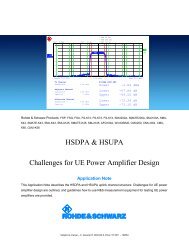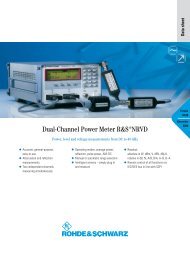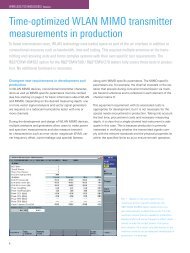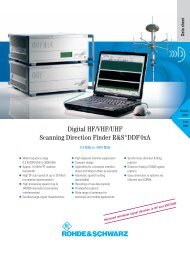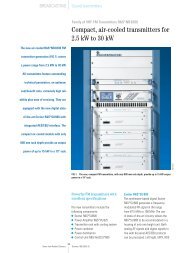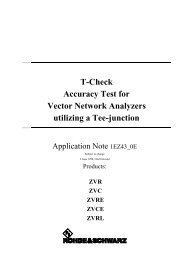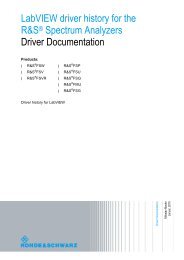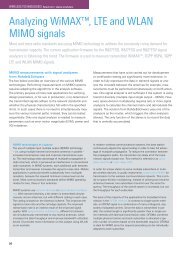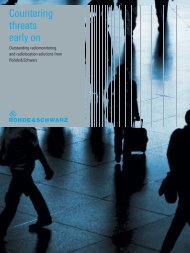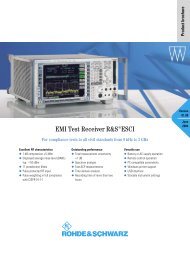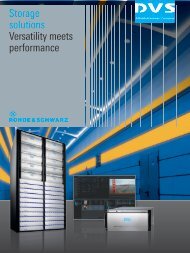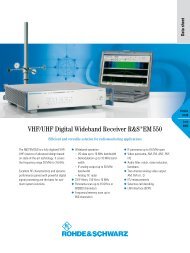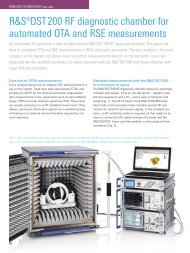English - Rohde & Schwarz
English - Rohde & Schwarz
English - Rohde & Schwarz
You also want an ePaper? Increase the reach of your titles
YUMPU automatically turns print PDFs into web optimized ePapers that Google loves.
TV Test Transmitter SFQ<br />
SFQ goes North American –<br />
with digital TV standard ATSC<br />
TV Test Transmitter SFQ has proven itself as a platform for the new digital TV<br />
modulation methods introduced in Europe [1]: as a universal test signal source<br />
in the development, production, quality control and servicing of all components<br />
employed in video and audio data transmission. The transmitter generates standard<br />
modulation signals for all the digital methods involved, for terrestrial emission<br />
(DVB-T), cable transmission (DVB-C) and transmission via satellite (DVB-S). The<br />
new model 30 (FIG 1) includes yet another standard: the digital terrestrial TV<br />
transmission standard ATSC recently introduced in North America.<br />
Photo 42 592<br />
FIG 1 Model 30 of TV Test Transmitter SFQ<br />
generates signals complying with the North-<br />
American TV standard ATSC<br />
All ATSC signals in excellent<br />
quality<br />
In 1996 the Federal Communications<br />
Commission (FCC) selected the TV<br />
standard of the Advanced Television<br />
Systems Committee (ATSC) as the new<br />
digital terrestrial TV standard for the<br />
United States of America. Allocation of<br />
the frequency ranges was completed<br />
a year later. The transition from the<br />
50-year-old analog NTSC system to<br />
the new digital transmission standard<br />
has since rapidly taken place.<br />
SFQ supplies signals of excellent quality<br />
in full compliance with specifi cation<br />
ATSC DOC. A/53 (8VSB) (FIG 2).<br />
The standard parameters can be modifi<br />
ed as required for a given measurement<br />
task. The test data sequences<br />
delivered by SFQ allow convenient<br />
measurement of bit error rates at the<br />
receiving equipment. To simulate real<br />
transmission conditions, the quality of<br />
the RF signal from SFQ can be modifi<br />
ed and degraded.<br />
Transmission immune to<br />
interference<br />
Articles<br />
The ATSC standard employs 8T VSB<br />
(eight-level trellis-coded vestigial sideband)<br />
amplitude modulation, which<br />
has eight discrete levels and is immune<br />
to interference. Vestigial sideband fi ltering<br />
of the signal (rolloff characteristic)<br />
reduces the bandwidth to the US channel<br />
spacing of 6 MHz and makes for<br />
minimum symbol interference in the<br />
receiver.<br />
News from <strong>Rohde</strong> & <strong>Schwarz</strong> Number 166 (2000/I) 13



